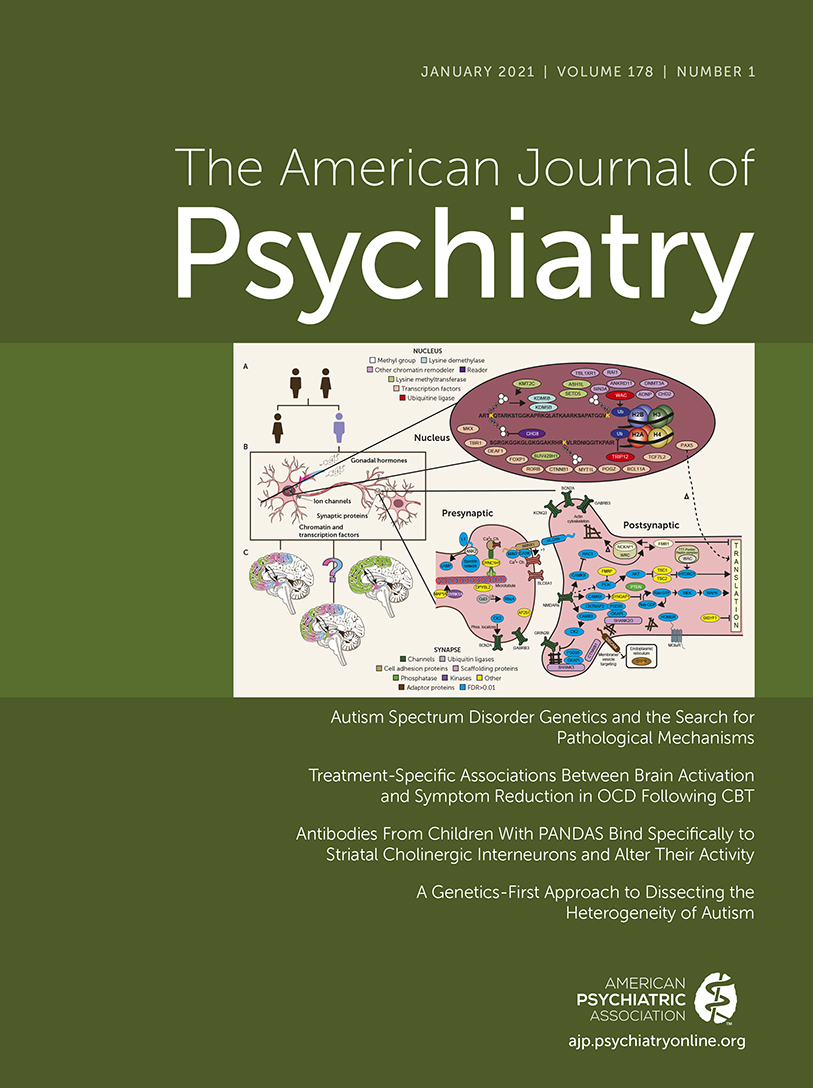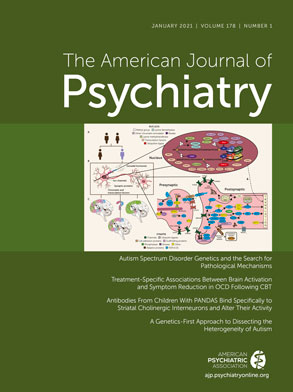2020 Articles of Import and Impact
Reproducible Genetic Risk Loci for Anxiety
Ambient Air Pollution and Daily Hospital Admissions for Depression
Vulnerability of U.S. Adults With Pain to Nonmedical Cannabis Use and Cannabis Use Disorder
Enduring Effects of an Early Parenting Intervention on Brain Responses to Maternal Cues Among High-Risk Children
Common Neural Circuit Disruptions in Emotional Processing Across Psychiatric Disorders
Translational Neuroscience: Mitochondrial Pathways Shed Light on Therapeutic Targets
Ketamine Shows Promise for Reducing Alcohol Use
From the AJP Residents’ Journal: Involuntary Hospitalization During COVID-19
Acknowledgments
References
Information & Authors
Information
Published In
History
Keywords
Authors
Metrics & Citations
Metrics
Citations
Export Citations
If you have the appropriate software installed, you can download article citation data to the citation manager of your choice. Simply select your manager software from the list below and click Download.
For more information or tips please see 'Downloading to a citation manager' in the Help menu.
View Options
View options
PDF/EPUB
View PDF/EPUBLogin options
Already a subscriber? Access your subscription through your login credentials or your institution for full access to this article.
Personal login Institutional Login Open Athens loginNot a subscriber?
PsychiatryOnline subscription options offer access to the DSM-5-TR® library, books, journals, CME, and patient resources. This all-in-one virtual library provides psychiatrists and mental health professionals with key resources for diagnosis, treatment, research, and professional development.
Need more help? PsychiatryOnline Customer Service may be reached by emailing [email protected] or by calling 800-368-5777 (in the U.S.) or 703-907-7322 (outside the U.S.).

